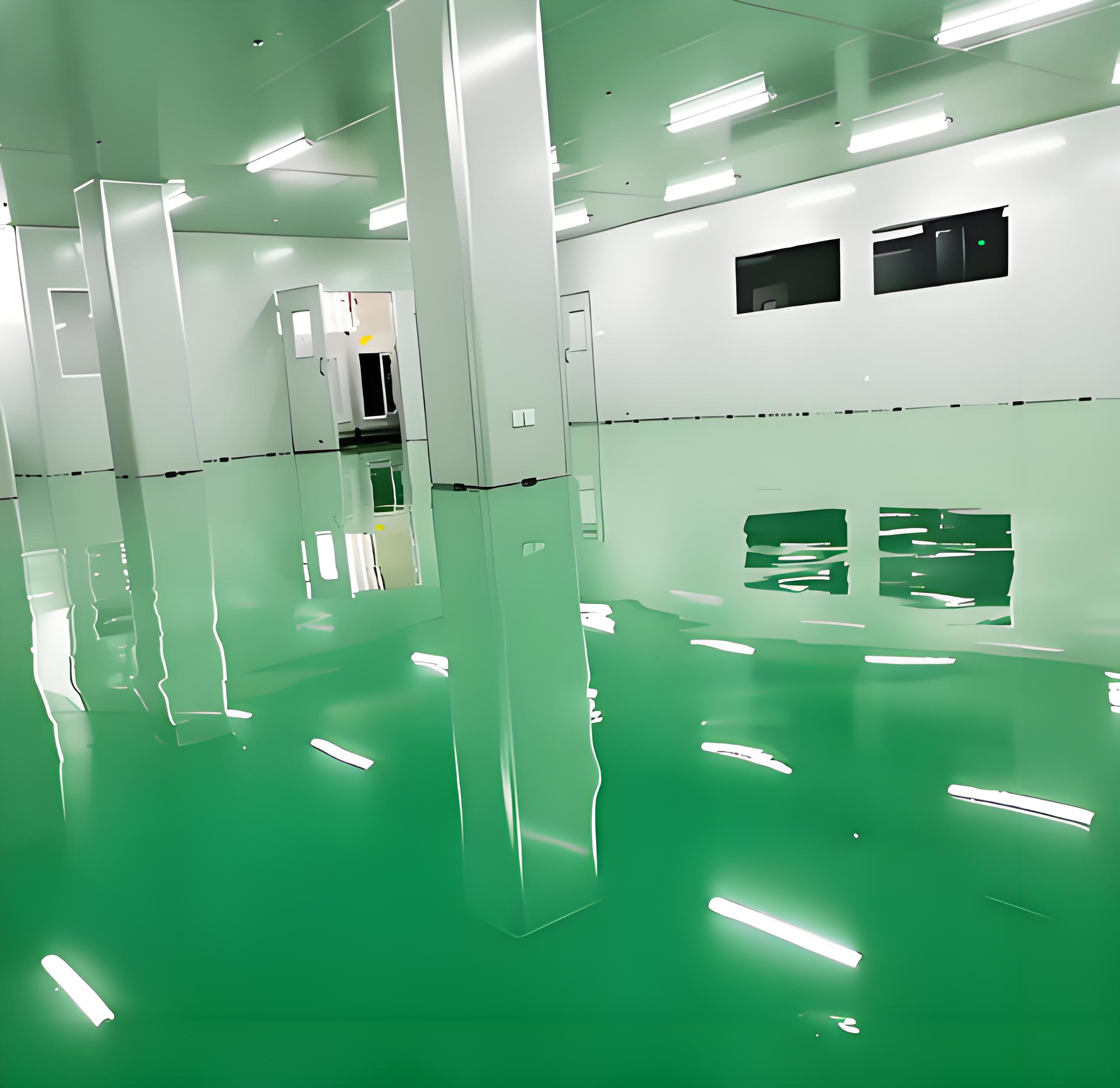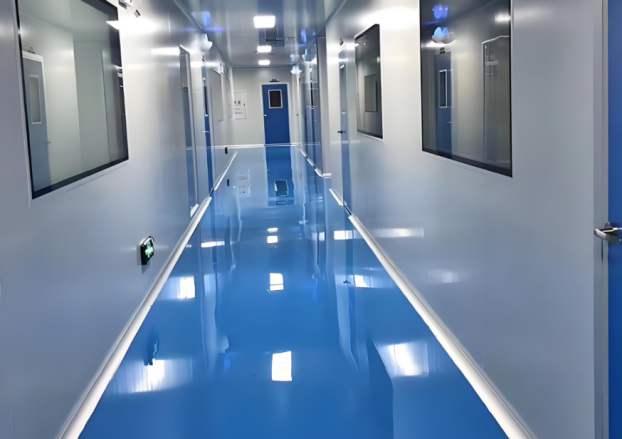




In the world of critical environments, few materials are as synonymous with cleanliness, durability, and reliability as stainless steel. The Stainless Steel Clean room is not merely a room; it's a highly engineered ecosystem designed to minimize particulate contamination and control environmental parameters. From semiconductor manufacturing to pharmaceutical production, the demand for superior cleanroom solutions has made stainless steel the material of choice. This article delves into the various facets of stainless steel cleanrooms, exploring their types, applications, engineering complexities, and the common challenges faced during their implementation. Whether it's a Sanitary Stainless Steel Cleanroom for biotech or a robust Stainless Steel Cleanroom for Semiconductor Fabrication, understanding these systems is key to ensuring product quality and safety.

A Stainless Steel Cleanroom is a controlled environment where pollutants like dust, airborne microbes, and aerosol particles are filtered out to provide the cleanest area possible. The defining characteristic is the extensive use of stainless steel in its structural components, wall systems, ceilings, and furniture. Stainless steel is chosen for its inherent properties: it is non-porous, extremely durable, resistant to corrosion, and easy to clean and sterilize. This makes it ideal for environments where hygiene and contamination control are paramount. Unlike traditional construction materials, stainless steel does not shed particles, rust, or degrade when exposed to aggressive cleaning agents, ensuring the long-term integrity of the cleanroom environment.
The Sanitary Stainless Steel Cleanroom represents the gold standard in industries where hygiene is non-negotiable, such as pharmaceuticals, medical device manufacturing, and food processing. The term "sanitary" refers to designs that prevent bacterial growth and facilitate easy, effective cleaning.
Key advantages include:
Superior Cleanability: The smooth, non-porous surface of stainless steel prevents the adhesion of contaminants and can withstand frequent cleaning with harsh disinfectants and high-pressure sprays without degrading.
Corrosion Resistance: Grades of stainless steel like 304 and 316L offer excellent resistance to corrosive chemicals, sterilizing agents, and moisture, preventing rust and material breakdown that could introduce contaminants.
Durability and Longevity: Stainless steel structures are incredibly strong and resistant to impact, dents, and wear, ensuring the cleanroom remains intact and functional for many years, providing a strong return on investment.
Compliance with Regulations: These cleanrooms are designed to meet stringent regulatory standards from bodies like the FDA, EMA, and ISO, particularly adhering to Good Manufacturing Practice (GMP) guidelines.
The wall system is the literal backbone of any cleanroom. A Stainless Steel Wall System Cleanroom utilizes panels made of stainless steel, often with an insulated core, to create the envelope of the controlled environment. This system is integral to maintaining cleanliness and pressure differentials.
This approach offers several critical benefits over traditional drywall or painted systems:
Seamless Integration: Panels are designed to fit together with minimal seams, reducing potential areas for contaminant accumulation.
Modularity and Flexibility: Many Stainless Steel Wall System Cleanroom solutions are modular, meaning they can be easily reconfigured, expanded, or relocated as production needs change. This offers tremendous flexibility for growing companies.
Structural Integrity: The panels provide a robust and rigid structure that can support HEPA/ULPA filters, lighting fixtures, and other heavy equipment directly from the ceiling grid.
Aesthetic Professionalism: The sleek, bright, and reflective surface of stainless steel creates a visually impressive environment that reinforces a culture of quality and attention to detail.
The semiconductor industry operates at the most extreme end of the cleanroom spectrum, often requiring ISO Class 1 to 5 environments. A Stainless Steel Cleanroom for Semiconductor Fabrication is engineered to control nanoscale particles that could ruin microscopic circuit patterns.
The requirements here are unique:
Ultra-Low Particulate Generation: Every component, from the Stainless Steel Wall System to the workstations, must be designed to generate virtually zero particles. Electropolishing the stainless steel to a mirror-like finish is a common practice to achieve this.
Chemical Resistance: Semiconductor processes involve highly corrosive acids, solvents, and gases. The stainless steel used (typically grade 316L VOC) must resist these chemicals to prevent off-gassing and surface degradation.
Static Control (ESD): Many components are electrostatically sensitive. Stainless steel can be integrated with grounding systems to dissipate static charge effectively, protecting delicate wafers.
Vibration and EMI Shielding: Advanced fabrication equipment is highly sensitive. The mass and rigidity of a stainless steel structure can help dampen vibrations and provide electromagnetic interference (EMI) shielding.
Designing and building a high-performance cleanroom is a complex discipline. Sanitary Stainless Steel Cleanroom Engineering encompasses the entire process from conceptual design and planning to commissioning and validation. It involves a multidisciplinary approach integrating architecture, HVAC, controls, and process engineering.
Key engineering considerations include:
Airflow Design: Engineering laminar or turbulent airflow patterns to efficiently sweep particles away from critical zones.
Filtration Systems: Selecting and integrating the appropriate HEPA/ULPA filtration to achieve the required ISO class.
Pressure Differential Control: Designing systems to maintain precise pressure cascades between rooms, ensuring air flows from cleaner to less clean areas.
Material Selection: Specifying the correct grade and finish of stainless steel for different applications and chemical exposures.
Utility Integration: Planning for the seamless incorporation of process gases, DI water, electrical systems, and data connections within the stainless steel framework.
For many companies, managing the design, procurement, construction, and validation of a cleanroom in-house is a significant burden. This is where the concept of Turnkey Stainless Steel Cleanroom Projects becomes invaluable. A turnkey provider acts as a single point of responsibility, delivering a fully functional and validated cleanroom ready for operation ("just turn the key").
Benefits of a turnkey approach:
Single-Source Accountability: The client has one contract and one entity responsible for the entire project, simplifying communication and problem-solving.
Streamlined Project Management: The turnkey vendor manages all subcontractors, schedules, and budgets, reducing the administrative load on the client.
Faster Time-to-Market: Integrated project planning and execution often lead to shorter overall project timelines.
Guaranteed Performance: The provider guarantees that the finished Stainless Steel Cleanroom will meet all agreed-upon performance specifications and regulatory requirements.

Even with the best planning, projects can encounter hurdles. Being aware of common problems can help in mitigating them effectively.
Cost Management: A high-quality Stainless Steel Cleanroom is a significant capital investment. Unexpected costs can arise from material price fluctuations, complex site conditions, or changes in project scope. Detailed planning and contingency budgeting are essential.
Welding and Finishing Imperfections: Poor welding techniques can create pits, cracks, and crevices that harbor contaminants. Similarly, an inferior surface finish (e.g., not mechanically polished or electropolished) can make cleaning difficult. It is crucial to work with fabricators who specialize in sanitary welding.
Integration and Coordination Issues: Failure to properly coordinate between structural, mechanical, electrical, and process trades can lead to clashes, rework, and delays. This is less likely in a well-managed Turnkey Stainless Steel Cleanroom Project.
Validation and Compliance Hurdles: Achieving and documenting compliance with regulatory standards (ISO, GMP) is complex. Problems during validation, such as failing air particle counts or pressure differential tests, can halt project progress. Involving validation experts early in the design phase is critical.
Maintenance Oversight: Even the best-designed Sanitary Stainless Steel Cleanroom will fail if not maintained properly. Common post-installation issues include using incorrect cleaning agents that damage surfaces, neglecting filter changes, and failing to maintain sealing on doors and pass-throughs.
The Stainless Steel Cleanroom is an indispensable asset for industries where the smallest particle can have the largest impact. Whether configured as a Sanitary Stainless Steel Cleanroom for life sciences or a precision Stainless Steel Cleanroom for Semiconductor Fabrication, its benefits in durability, cleanability, and compliance are unmatched. The success of such a facility hinges on meticulous Sanitary Stainless Steel Cleanroom Engineering, often best executed through Turnkey Stainless Steel Cleanroom Projects that ensure seamless integration and performance. By understanding the capabilities of the Stainless Steel Wall System Cleanroom and proactively addressing common implementation challenges, organizations can invest in a critical environment that safeguards their products, processes, and ultimately, their reputation for years to come.